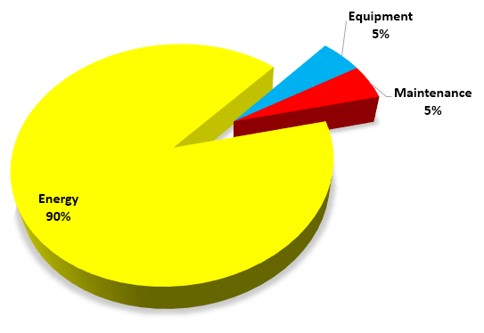
What should you do when it comes time to decide if you should repair or replace your aging air compressor?
There are a few things you should consider. Air compressors are like motor vehicles — if they are used continuously, hardly shutting down, they should not be expected to run for a long time without major repairs. Compressors can be refurbished and rebuilt, but after the work is done what remains is an old chassis with decreased efficiency.
Component degradation and failure will occur with increasing frequency on machines with a high number of operating hours. Older units are also less efficient than newer models because technological advances have been made in compressor design. Because of this, if your compressor is more than 15 years old, it may be time to consider a replacement plan.
Consider that a major portion of the cost of running a compressor is power input. For example, a 50-hp compressor running full time can cost $37,000 per year in energy consumption at 10 cents per kWh. Choosing a new compressor of optimum design could save 10% to 15% of this cost — worth up to $5,500 per year in savings. In addition to this, there could be some utility power incentives available to help with the cost of a new compressor.
Further to this, you may be able to find additional savings in the compressor room by upgrading air dryers, filters, storage receivers, and compressed air piping. More savings could be gained by reducing pressure, fixing leaks, and eliminating inappropriate uses.
Curious about all of this? Call your service provider for some help in understanding what’s possible.
Filed Under: Components Oil Coolers, Compressed Air Technologies, Engineering Basics, Fluid Power Basics, Pneumatic Tips